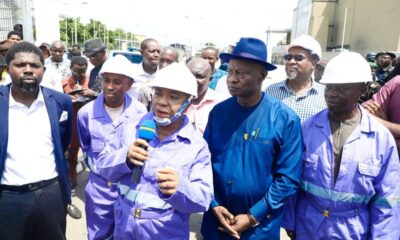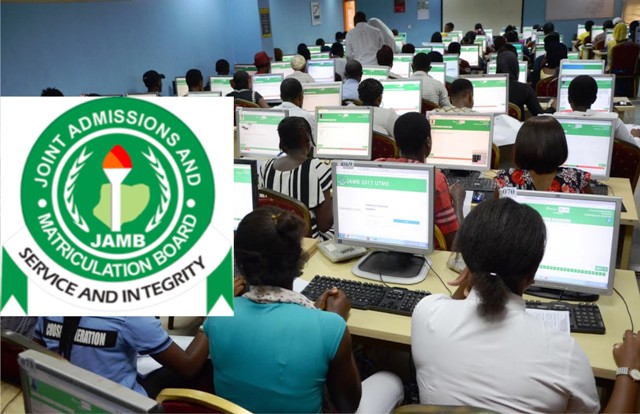Business
Bank Bailout: How Was The Money Spent?
Although, hundreds of well-trained eyes are watching over the $700 billion that Congress last year decided to spend bailing out the nation’s financial sector, it’s still difficult to answer some of the most basic questions about where the money went.
Despite a new oversight panel, a new special inspector-general, the existing Government Accountability Office and eight other inspectors general, those charged with minding the store say they don’t have all the weapons they need. Ten months into the Troubled Asset Relief Programme, some members of Congress say that some oversight of bailout dollars has been so lacking that it’s essentially worthless.
“TARP has become a programme in which taxpayers are not being told what most of the TARP recipients are doing with their money, have still not been told how much their substantial investments are worth, and will not be told the full details of how their money is being invested,” a special inspector-general over the programme reported last month. The “very credibility” of the programme is at stake, it said.
Access and openness have improved in recent months, watchdogs say, but the programme still has a way to go before it’s truly transparent.
For its part, the Treasury Department said it’s fully committed to transparency, and that it’s taken unprecedented steps to report the status of TARP to the public. It regularly posts information on which banks have received money, as well as details about each of those transactions. Further, Treasury said, it doesn’t agree with all of its watchdogs’ recommendations, which it said could hamper the programme’s effectiveness.
TARP was passed in the midst of last fall’s financial meltdown as a way to keep American banks from falling deeper into the abyss.
The programme was controversial from the start. Its supporters say it’s helped spark bank lending in the country, but critics say it’s unfairly rewarded the big banks and Wall Street firms that pushed the economy to the brink.
The programme also has undergone a major transformation. When the Bush administration first went to Congress for the money, TARP’s main purpose was to buy up hundreds of billions of dollars in bad mortgages and so-called mortgage-backed securities that were bought and sold on Wall Street.
Today, TARP consists of 12 programmes that sent those hundreds of billions of dollars to big banks, but it’s also bailed out auto companies, auto suppliers, individuals delinquent on their mortgages, small businesses and American International Group, the big insurance company.
The watchdogs now must oversee the maze that TARP has become.
Just because a lot of people are watching, however, doesn’t mean they get everything they want to see.
One of the most prominent watchdogs is Elizabeth Warren, a Harvard Law School professor who chairs a TARP oversight panel created by Congress.
Her panel has released 10 major reports that examine TARP’s plans and policies, finding that much of the work by the Treasury and the Federal Reserve has been opaque, with unclear or contradictory goals.
One report took Treasury to task for vastly undervaluing more than $250 billion in transactions with the country’s major banks, and another suggested several ways to revamp federal regulation over the financial sector. Other reports have criticised the Treasury for its initial defensiveness in opening its books.
Despite its mandate, however, the panel doesn’t have subpoena power. That means it can ask, but can’t compel, officials from Treasury, the Federal Reserve or the nation’s banks to testify.
Henry Paulson, the Treasury secretary under former President George W. Bush, repeatedly stiff-armed the panel. Timothy Geithner, the current secretary, has been more open, but so far has testified just once before Warren’s group. Geithner is scheduled to appear again in September, and has agreed to do so quarterly, and two other senior Treasury officials also have appeared.
The relative lack of testimony from top officials, however, is one reason why critics of Warren’s panel think it hasn’t delivered on its promise.
In June, in an otherwise mundane congressional hearing, Republican Rep. Kevin Brady of Texas surprised Warren with an aggressive critique of the panel, saying it’s failed to help taxpayers understand what Treasury is doing with the billions at its disposal.
“There’s been very little value that the panel has brought to this issue or even insight on how these bailout dollars have been used,” he said. “I frankly believe at this point, given the reports that we’ve seen again with little value, I think the panel needs to be abolished.”
Warren defended the panel’s work, saying the lack of subpoena power means we “only have the capacity to invite” witnesses.
“So you asked Secretary Paulson in the first month of existence?” Brady asked.
“I believe we asked him repeatedly,” Warren said. “We asked him in our first month, in our second month, in our third month.”
Warren said she took the criticism seriously, dropping by Brady’s congressional office as soon as the hearing adjourned. The two had never met before, she said, and “I was really surprised,” by his comments.
“He said he felt frustrated,” she said. “He wanted us to be even blunter” in the panel’s reports.
Brady amplified his comments in an interview last month, saying that some of the panel’s work seem like a “PR ploy” and that “the moment has passed” for Warren’s group to play the role Congress envisioned.
His feelings have been partially echoed by two other members of the panel, Rep. Jeb Hensarling of Texas and former Sen. John E. Sununu of New Hampshire, both Republicans appointed by congressional GOP leaders (the other three members were appointed by Democrats).
Both have accused the panel of mission creep of straying from the central goal of determining exactly how, and how well, Treasury is doing its job.
Hensarling said that “taxpayers have not received answers as to whether the TARP programme works, how decisions are being made or what the banks are doing with the taxpayers’ money.” While he praises the “very smart people on the panel,” he said too many questions have been left unexplored.
He acknowledges that the lack of subpoena power makes things tough. “But even if we had it, I’m not sure we would have used it,” said Hensarling, who’s pushing to abolish TARP.
The other primary watchdog is Neil Barofsky, a special inspector-general named in November by Bush specifically to track TARP funds. His office does have subpoena power, and a growing staff that’s expected ultimately to have 160 people pursuing audits and criminal investigations.
It’s also made a series of recommendations to the Treasury, asking that it do more to reveal how TARP money is being spent. Treasury has adopted some of its recommendations, but rejected others including one of the most important: Giving taxpayers precise details on how TARP funds have been used by banks.
The recommendation involves one of the most visible aspects of TARP: investing $218 billion in 650 banks, helping them to strengthen their balance sheets and boost lending to American businesses and homeowners.
Barofsky’s office has long advocated that the Treasury require banks to detail how the TARP money they’ve received has been used. The department has refused, saying that once an investment is made in a big bank, it’s not possible to track how it’s used.
Barofsky’s office rejected that assertion, and did its own survey of 360 institutions, finding that most could say how they’d used the money.
“Treasury’s reasons for refusing to adopt this recommendation have been squarely refuted by the inspector general,” his office reported to Congress.
Business
Eazipay Offers Zero-Interest Loans To 150,000 SMEs, Employees

With a mission to ignite growth, encourage business continuity and help businesses and employees thrive, Eazipay is gearing up to propel the dreams of 150,000 SMEs and employees to new heights through her relief fund.
Gone are the days of financial constraints and stifled dreams. With Eazipay’s support, SMEs and employees alike can bid farewell to limitations and embrace a world of endless possibilities.
Whether it’s start up, business expansion or personal development, Eazipay is here to make dreams come true.
The mind-blowing initiative, which kicked off this month, would end in December, and will also offer a range of perks and benefits designed to put a smile on the faces of SMEs and employees alike.
From exclusive discounts to various advisory services and beyond, Eazipay is committed to spreading happiness and creating lasting impact in people’s lives and to the growth of businesses.
The technology company which offers products and services that range from payroll management to IT/Device management and assessments, “Eazipay isn’t just providing financial support but also unleashing a wave of growth and prosperity for SMEs and employees across the nation.
“Interested businesses and individuals can take part in this initiative directly from the Eazipay website: www.myeazipay.com”.
Business
SMEs Critical For Sustainable Dev – Commissioner

The Commissioner of Finance, Lagos State, Abayomi Oluyomi, has described Small and medium Enterprises (SMEs) as a critical engine for sustainable development in any economy.
He said this recently at the 10th anniversary of the Alert Group Microfinance Bank and the opening of their new head office in Lagos.
According to the National Bureau of Statistics, SMEs accounted for about 50 per cent of Nigeria’s gross.
He commended the positive impact of the Alert MFB as it empowers SMEs in the State.
“Alert MFB in the past 10 years has been at the forefront of empowering SMEs in Lagos State, disbursing over N30bn in loans to over 30,000 individuals having small to medium businesses over that period, which is quite remarkable”, he said.
Speaking, the Group Managing Director of Alert Group, Dr Kazeem Olanrewaju, revealed that the financial institution commenced business in 2013 as a microfinance bank.
“We started this journey in 2013 and it has been expanding. Today, they have about 10 branches across Lagos. They have supported well over 30,000 clients and have disbursed over N30bn.
“The company has been profitable since the second year. Looking at the market and the available opportunity, the Alert MFB board decided to come together to establish a Microfinance Institute (MFI), which is the Auto Bucks Lenders”, Dr. Olanrewaju said.
The GMD further stated that the company was focused more on supporting businesses and small and medium enterprises.
“The loan to support business represents over 98 per cent. The consumer loans you will see are the ones given to entrepreneurs. So, the area of focus of Alert MFB and Auto Bucks Lenders is to support businesses across the country.
“With the establishment of Auto Bucks Lenders, we have the opportunity to also do business outside Lagos. So, presently, we have offices in Ogun State and Oyo State. We intend to go to every part of Nigeria to support what we are doing”, he declared.
Business
Retailers Explain Price Drop In Cement Cost

The cement market, in the last couple of weeks, has seen a significant turnaround with prices tumbling from between N10,000 and N15,000 per 50kg bag to between N7,000 and N8,000.
The sudden rise in the prices of cement and other major building materials in February this year upsets the construction industry, especially in real estate, where many developers were forced to abandon building sites.
A recent market survey conducted by The Tide’s source in different locations across the country confirmed a price drop, ranging between N7,000 and N7,500 per bag, though BUA cement is selling for N7,500 to N7,800 per 50kg bag, depending on location.
Both entrepreneurs and major distributors who were interviewed, explained that the price drop is due to low demand and government’s intervention.
At the peak of the price hike, the Federal Government called a meeting with major producers where it was agreed that a bag of cement should be between for N7,000 to N8,000, depending on location.
But the producers did not comply with this agreement immediately, followin which “Nigerians stopped demanding for cement; many project sites were abandoned as developers sat back and waited for the prices to come down.
“So, what has happened is an inter-play of demand and supply with price responding, which is Economics at work”, Collins Okpala, a cement dealer, told the source in Abuja.
In the Nyanya area of the Federal Capital Territory, a 50-kg bag of Dangote cement now sells for between N7,000 and N7,500, while BUA cement sells for between N8,500 and N9,500, down from between N11,000 and N12,000 respectively.
In Lagos, the product has seen significant price drop too. In Ojo area of the state, Sebastin Ovie, a dealer, told our reporter that what has happened is a crash from the January price, attributing the crash to low demand and stronger naira.
“The current price of the product is between N7,000 and N7,500 per 50kg bag, depending on the brand. This is a significant drop from the average of N12,000 which most dealers were selling in February and March”, he said.
A dealer in Agege area of the state who identified himself as Taofik Olateju, told the source that sales are picking up due to the drop in price.
He recalled that Nigerians at a point stopped buying due to the high price of the product at N15,000 per bag.
“I am sure most dealers ran at a loss then because we had mainly old stocks which we wanted to offload quickly”, he said, confirming that the product sells for between N7,500 and N8,000, depending on the brand and the demand for the brand.
Continuing, Olateju noted that “because the naira is now doing well against the dollar, it will be unreasonable for manufacturers to continue to sell the product at the old prices. I also believe that the federal government’s intervention and the threat to license more importers may have worked, leading to the reduction in price”.
In Enugu, the source reports that the product sells for between N7,200 and N7,500 depending on the brand and location.
“This is a city where the price of a 50kg bag went for as high as N12,000 and N13,000 in some cases in February and March”, Samuel Chikwendu said.
He added that the prices of other building materials, especially iron rods, have also dropped considerably which is why, he said, activities are picking up again at construction sites.
The story is slightly different in Owerri, the capital of Imo State, where Innocent Okonkwo told the source that low demand was also driving the price drop, adding that a 50kg bag was selling for N9,000 on the average in the state.
Sundry market observers are optimistic of further price reductions, but they remain cautious as manufacturers, wholesalers, and retailers continue to play critical roles in setting prices for end-users.
They lamented, however, that despite Nigeria’s status as one of the largest producers of cement in Africa, the price of the product continues to rise, particularly in the face of high inflation impacting the building materials market generally.
Okpala in Abuja highlighted the variations arising from direct sourcing from manufacturers versus procurement through dealers, with traders holding old stocks selling products at prices ranging from N8,500, N8,300 to N8,000 per bag.
Lucy Nwachukwu, another dealer in Abuja, said the significance of procurement volume in determining cement costs, noting that stability in prices has been observed over the past month, with the product retailing for between N7,000 and N7,800 depending on the brand.
In Port Harcourt also, a customer, Daniel Etteobong Effiong, said the price goes between N7500 to N8500, depending on the brand and the location one is buying from.
-
Sports5 days ago
Nigeria’s Onakoya Sets New Chess Record
-

 Niger Delta5 days ago
Niger Delta5 days agoA’Ibom Plans 486 Rural Road Repairs To Boost Agric
-

 Niger Delta16 hours ago
Niger Delta16 hours agoMile One Market: Committee Commences Verification Exercise …Denies Allocations Of Shops
-
Sports15 hours ago
Chairman Lauds NPFL Referees Improvement
-

 Maritime5 days ago
Maritime5 days agoNigeria Records 3,310 Boat Mishaps In 10 Years
-

 News5 days ago
News5 days agoEFCC, Experts Warn Nigerians To Guard Against Cyber Crimes
-

 News17 hours ago
News17 hours agoJAMB Arrests Father For Impersonating Son At Exam Centre
-
Women16 hours ago
The Desire Of Every Woman In Marriage

